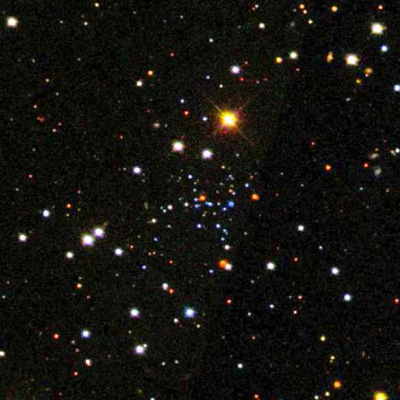







| BOOKS | F. A. Q. | ARTICLES | TALKS | ABOUT KEN | DONATE | BEYOND OUR KEN |
|---|
By Ken Croswell
Published on ScienceNOW (July 22, 2011)

Credit: Sloan Digital Sky Survey
Bright stars may dazzle us, but it's the faint ones that test an astronomer's skill. After all, they're the hardest to detect, making their discovery a greater achievement. Now researchers report that a newfound star cluster in the constellation Pegasus is the dimmest ever seen. Whereas the Milky Way's greatest star clusters radiate millions of times more light than the Sun, Segue 3, shown here in an image spanning 64 light-years, ekes out a mere 90 Suns' worth of light. As astronomers will report in a future issue of The Astronomical Journal, the dim cluster is ancient, having formed 12 billion years ago. Located 55,000 light-years from Earth and 22,000 light-years below our Galaxy's plane, Segue 3 resides in the Milky Way's halo, the population of old stars that surrounds the spiral-sculpted disk housing the Sun. The cluster has cast most of its original stars into the halo and is destined to disintegrate completely.
Ken Croswell is an astronomer and the author of The Lives of Stars.
"A stellar picture of what we know or guess about those distant lights."--Kirkus. See all reviews of The Lives of Stars here.
| BOOKS | F. A. Q. | ARTICLES | TALKS | ABOUT KEN | DONATE | BEYOND OUR KEN |
|---|